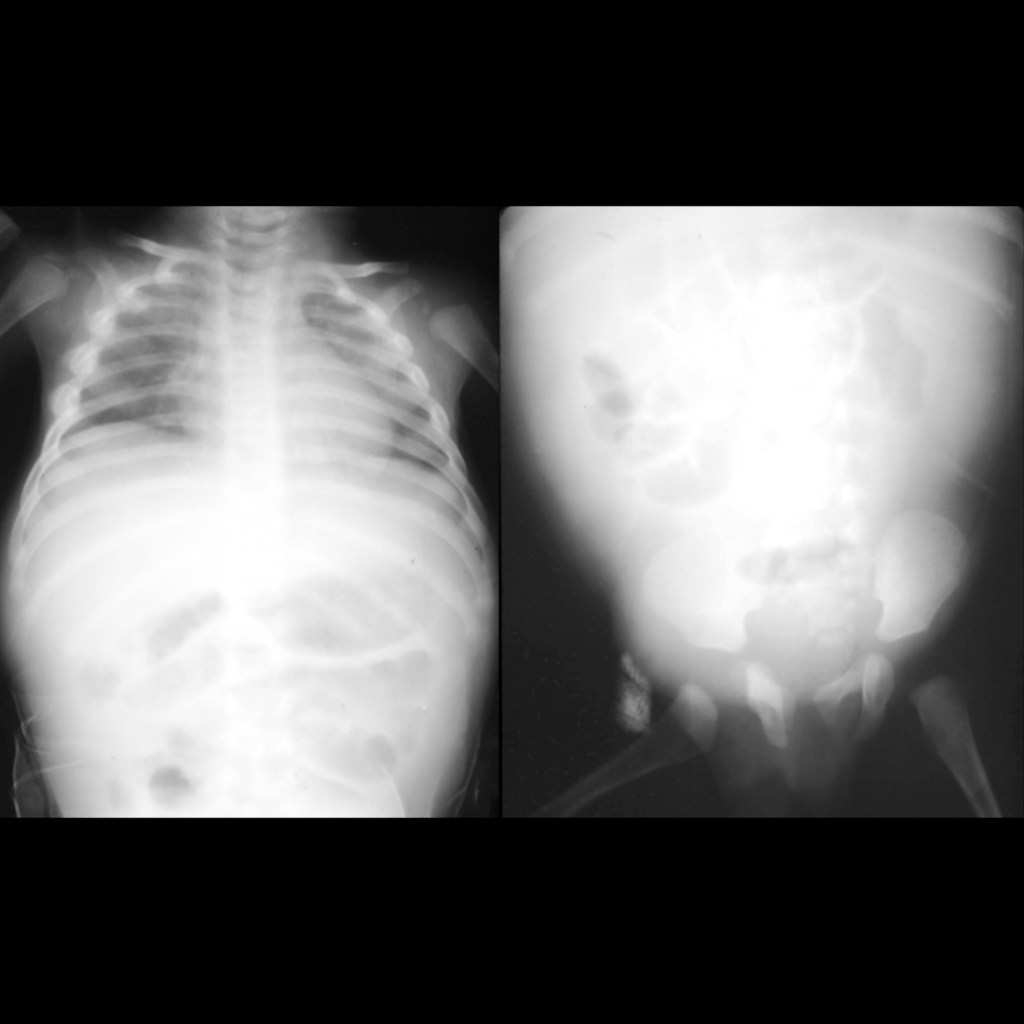- Etiology: blunt thoracic trauma
- Imaging: spectrum from subtle cortical irregularity of rib contour to frank displacement of fracture fragments, look for underlying pneumothorax / lung parenchymal injury / liver + spleen injury
- Clinical: unexplained rib fracture in infant or toddler has high specificity for child abuse
Radiology Cases of Rib Fracture
Radiology Cases of Rib Fracture Due to Blunt Chest Trauma



Radiology Cases of Rib Fracture Due to Birth Trauma


Radiology Cases of Rib Fracture Due to Child Abuse








Gross Pathology Cases of Rib Fracture

